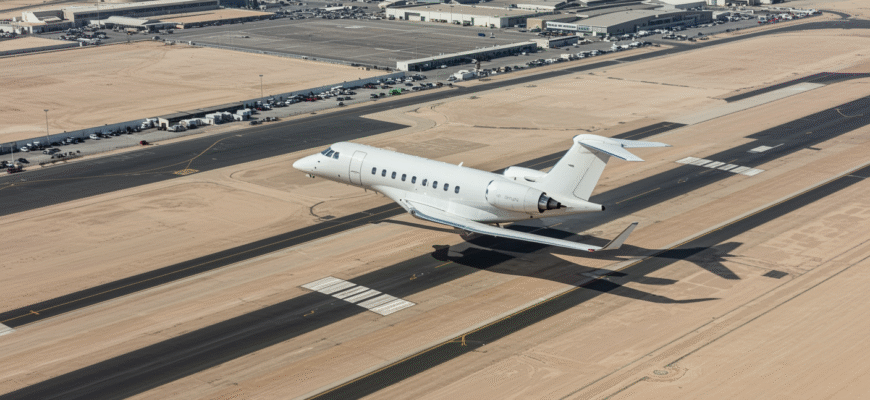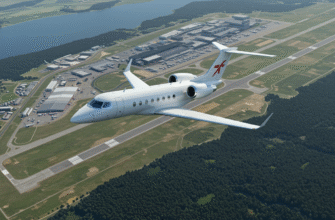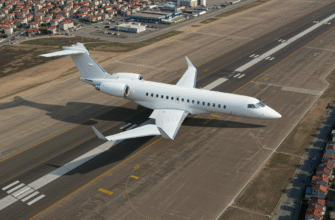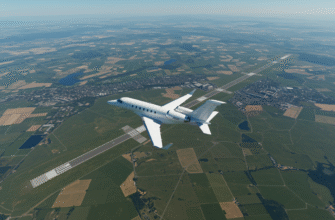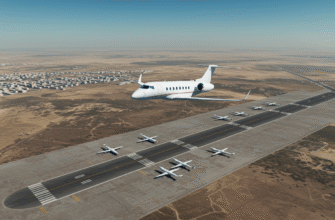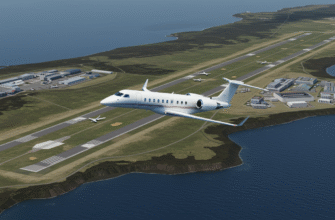Traveling shouldn’t feel like waiting in line at a bank. And for the ultra-private, ultra-punctual crowd flying into Abu Dhabi, it doesn’t. Al Bateen Executive Airport (AZI) is hardly recognizable as an airport if you’re used to fluorescent lights, chaotic layovers, and gate changes shouted over intercoms. Here, planes don’t wait. Neither do the people stepping off them. Sitting just 12 kilometers from the center of everything—yes, everything—AZI isn’t just about convenience, it’s about strategy. It’s where business moguls, lovestruck royals, and entire diplomatic task forces touch down, sip a perfectly brewed espresso, and are already halfway to Emirates Palace before you’ve found baggage claim at the commercial terminal. This isn’t some souped-up airline lounge. It’s a silent checkpoint for the world’s most watched and least seen. And if you’re not on the manifest here, you’re either wildly late to the party or not invited at all.
The Allure Of Al Bateen: What Sets It Apart
The names aren’t public. The passengers don’t post selfies by the tarmac. Al Bateen’s guest list is the kind of silence money can buy.
- Heads of state whose movements are redacted more than revealed
- Celebrities whose assistants sign NDAs longer than their contracts
- CEOs whose Gulfstream wings never touch commercial tarmac
And none of them are sitting in line scanning the flight board.
While commercial travelers hunt for Wi-Fi and elbow room, AZI passengers are already wheels-up or city-bound within minutes. No lines. No TSA shuffle. Just biometric clearance and custom-luxe service behind doors most people will never know exist.
It’s not just the experience—it’s the geography. Al Bateen sits on Abu Dhabi Island, less than a 15-minute car ride to the government quarter, boutique hotels, top-tier hospitals, and waterfront estates. No detours. No highways clogged with minivans from the regular terminals.
A Discreet Past, A Purposeful Present
Long before limousine convoys and chic hangars, Al Bateen was Abu Dhabi’s global welcome mat. Opened in 1970, it was the city’s first real connection to the outside world. Before Yas Marina, before the Louvre, before anyone whispered “Ferrari World,” Al Bateen was the face of Abu Dhabi in the sky.
By the early ‘80s, as tourism and trade ballooned, commercial air traffic migrated to a newer, larger airport. Al Bateen, meanwhile, took on a sharper edge—transformed into a military air base cloaked in dust, protocol, and maybe a little mystery.
Then in 2008, something shifted. What was rigid became refined. The infrastructure built for defense found new life in discretion and elegance. Military-grade runways were reinvented for Gulfstreams and Bombardiers. The bones stayed strong, but the skin—plush lounges, private conference suites, and high-clearance access ways—told a different story.
| Then | Now |
|---|---|
| Primary Intl. Airport (1970s) | Private Jet Terminal Abu Dhabi (Post-2008) |
| Military Air Base (1982–2008) | Luxury BizJet Haven (24/7, No slot limits) |
What really separates Al Bateen isn’t just the history or location—it’s the silence. No airliners queuing for descent. No overhead rumbles every three minutes. This is the only jet-only airport in the entire Middle East and North Africa region. It means custom crew services, ultra-fast turnarounds, and freedom from commercial traffic bottlenecks.
It’s this absence—of chaos, of noise, of public exposure—that makes it so appealing. Not just to the people who land there, but to the handlers managing their exact minute of arrival. Every aspect down to the engine cooldown is choreographed: who’s allowed on the apron, which vehicle appears beside the aircraft, when the jet rolls without ever idling.
Within aviation circles, the term “smooth ops” gets tossed around. But at Al Bateen, it’s more than smooth—it’s invisible. And there’s a reason pilots call it the ghost runway. You see the lights, not the jet. You hear the descent click, not the landing. It’s not a vibe. It’s a system. That’s the real story behind the Al Bateen Executive Airport history—built to vanish, perfected to perform.
Inside the Experience: What You’ll Never Post on Instagram
No one brags on social about Al Bateen Executive Airport. And that’s the point.
Here’s the thing—most people flying into the UAE have their Instagram stories locked and loaded: skyline views, hotel champagne towers, maybe a camel or two. But if your plane touches down at AZI, chances are your camera’s tucked away and your phone’s on silent. It’s not for show. It’s for getting in, getting out, and getting on with it.
Soundproof lounges and shadowy boarding zones
Whispers are louder than announcements here. You won’t hear “now boarding Group 4” because there are no groups—just arrivals and departures, seamless and stateless.
Even the carry-on bag with those designer logos? Might get left on your car seat. Why roll something when someone’s already walked it in for you?
The lounge itself? It feels like a billionaire’s living room. Designed with royalty and heads of state in mind, every inch is customized. Think silk walls, light-dimming protocols, private prayer rooms, soundproof conference corners, and staff who know when to disappear.
Concierge on standby: silent but efficient VIP handling
- Arrival greeting: Limousine meets jet stairs, not curbside.
- Formalities: Passport? Handed over. Done within minutes.
- Support: Fully tailored crew, flight clearance, route optimization handled in-house.
Most travelers here won’t remember the terminal—they remember not waiting.
Touchdown to task force in minutes: fast turnarounds
Time kills power. So AZI kills time. Whether you’re a Gulf royal flying in for 48 hours or a tech mogul landing for one dinner meeting, the turnarounds are ruthless. Landing to hotel front desk can clock under 20 minutes if traffic holds. There’s no scenic detour, no baggage claim saga—it’s direct action.
The airport’s military past shows. Movements are deliberate, clean, and confidential. Bottom line: by the time others are collecting bags at immigration across town, you’re already briefing your inner circle on satellite protocol or sipping espresso in your penthouse suite.
Runway Power: What Makes AZI Operate Unlike Any Other
Slot-free landings: when jets don’t wait
Other airports in the region juggle queues, clearance, and holding patterns. AZI? None of that. There are no slot restrictions. If your jet’s on the radar, the runway’s open. It’s the private aviation equivalent of having your name on the guest list—always at the top.
Private aircraft services: fuel, crew, ground support — all tailored
From Gulfstream to Dassault, every aircraft gets full-spectrum support at AZI. Crew members refuel, re-cater, and relaunch with minutes-notice logistics. Charter ops coordinate with Abu Dhabi air traffic directly, cutting redundant protocols. Even tarmac activity feels calculated, like choreography that never shows its rehearsal.
No commercial aircraft chaos: what that absence feels like
The silence is jarring. No flight announcements. No screaming toddlers. No herds of passengers in duty-free limbo. Just the buzz of turbine preps and the low murmur of professional speak. It’s the kind of order you don’t notice until you’ve left it. No chaos doesn’t mean sterile—it just means everything happens intentionally.
Keyword Focus: VIP jet terminal UAE, private aviation Abu Dhabi, luxury air travel UAE
Al Bateen isn’t a place tourists wander into—it’s a destination for those who already know where they’re going. As the only dedicated VIP jet terminal in the UAE, AZI operates in a category of its own.
When it comes to private aviation in Abu Dhabi, it’s the heartbeat. Celebrities, diplomats, even foreign heads of state choose it not because it’s flashy—but because nobody notices they’re here.
As far as luxury air travel in the UAE goes, this isn’t silver service—it’s platinum silence. Nothing posted. No trace. Just perfection in motion, behind the scenes.
